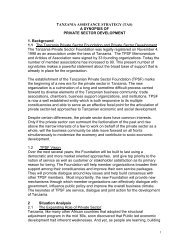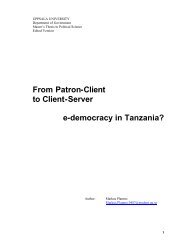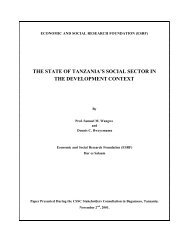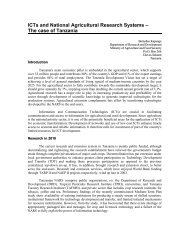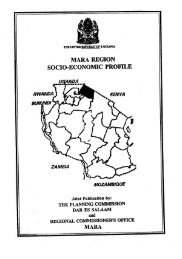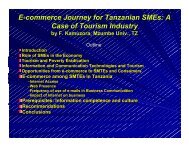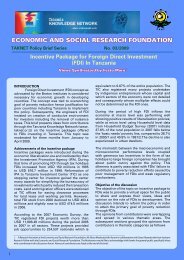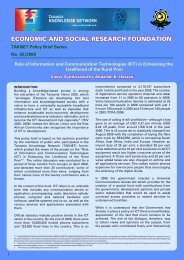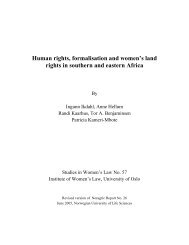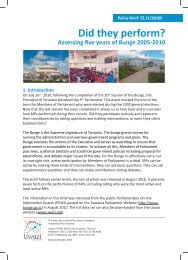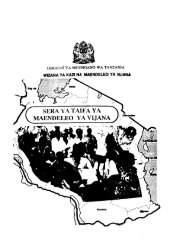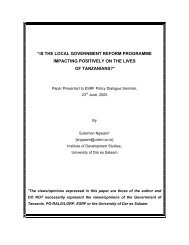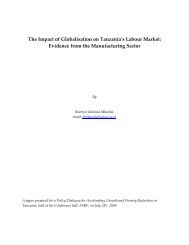Kilimanjaro - Tanzania Online Gateway
Kilimanjaro - Tanzania Online Gateway
Kilimanjaro - Tanzania Online Gateway
You also want an ePaper? Increase the reach of your titles
YUMPU automatically turns print PDFs into web optimized ePapers that Google loves.
2.4.1.10Irrigation:<br />
According to the Japanes Planning Team (RIDEP,<br />
<strong>Kilimanjaro</strong> 1977) 5.4 percent of the region’s cultivated land is<br />
irrigated compared with only 4 percent in <strong>Tanzania</strong> as a whole.<br />
Within the region, irrigation coverage is exceptionally high in<br />
Moshi rural, Hai, Rombo and Pare districts (Mwanga and Same).<br />
This is due to the fact that these two districts (Moshi Rural and<br />
Hai) are in densely populated mountain slopes where a large<br />
amount of water is available and utilised, and the fact that an<br />
increasing number of people who are gradually being forced by<br />
population pressure to move downhill and settle in lowland areas<br />
are using an increasingly large amount of water for irrigation<br />
farming. Rombo has very few permanent streams and irrigation in<br />
the district is negligible, even within the Coffee/banana belt. In<br />
<strong>Kilimanjaro</strong> region, water plays a very crucial role. Three sources<br />
of irrigation water may be considered: surface water, underground<br />
water and dams. Water resources in Moshi rural, Hai and<br />
Rombo districts originate primarily from rain in the mountain area<br />
and from the melting snow on the mountain slopes, forming<br />
numerous tream flowing down the mountain.<br />
TABLE XVII: TRADITIONAL IRRIGATION WATER SOURCES,<br />
KILIMANJARO REGION, 1990<br />
District No. of Rivers DMS Traditional Irrigation Channels<br />
Same 6 1 52<br />
Mwanga 5 1 26<br />
Rombo 2 - 16<br />
Moshi 8 - 260<br />
Hai 7 - 154<br />
51



